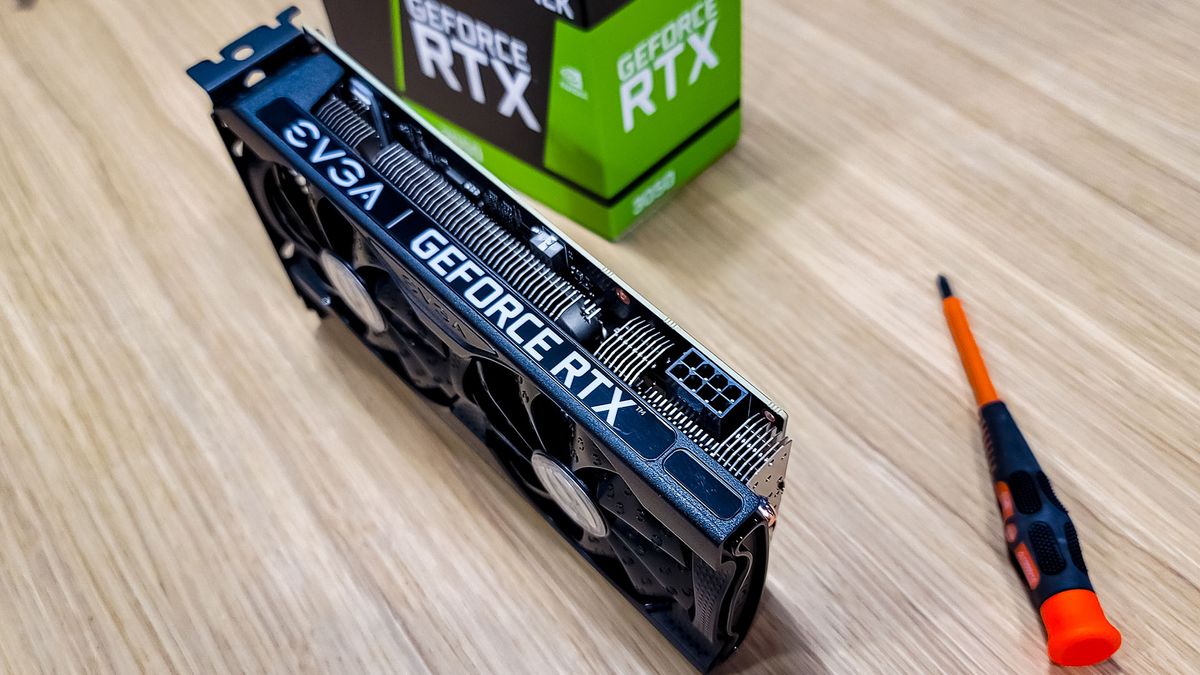Nvidia could make a surprising move with RTX 4000 GPUs
Surprising on the face of it, perhaps, but sticking with PCIe 4.0 does make some sense

Nvidia might stick with the PCIe 4.0 interface with its next-gen Lovelace graphics cards, according to a fresh rumor.
This comes from a prominent hardware leaker on Twitter, Kopite7kimi, who spilled a couple of fresh nuggets of info in some recent tweets about what will presumably be RTX 4000 GPUs (though Nvidia could depart from the obvious next step for the name).
PCIe Gen4April 24, 2022
Existing Nvidia RTX 3000 GPUs (Ampere) use a PCIe 4.0 slot in the motherboard, but with Lovelace, Nvidia was thought to be possibly stepping up to PCIe 5.0.
Mainly because Nvidia is adopting PCIe 5.0 with Hopper, its next-gen heavyweight (data center) GPUs, so it’d follow to some extent that Team Green might look to shift the incoming consumer graphics cards in that same direction. At the very least from a marketing point of view, particularly now that PCIe 5.0 is provided by Intel with the 12th-gen Alder Lake range, and the cutting-edge standard is expected to be adopted by AMD with next-gen Zen 4 processors that should debut later in 2022 (which is when Lovelace is scheduled to arrive).
Furthermore, Nvidia is expected to use PCIe 5.0 power connectors with the RTX 4000 range – as already seen with the RTX 3090 Ti, in fact, given the GPU’s heavy power demands – so Lovelace will theoretically use PCIe 5.0 for power, but stick with that PCIe 4.0 interface.
Analysis: Will we really need PCIe 5.0 before RTX 5000, anyway?
While this might seem like an unusual situation to have a graphics card with PCIe 5.0 power but slotted into a PCIe 4.0 interface, it’s not really that surprising when you think about it more. As mentioned, the new 3090 Ti already does this, and is purportedly a test drive of sorts for RTX 4000 cards, if the rumor mill is to be believed (as Neowin, which reported on this, points out). Naturally, all of this remains speculation, so let’s not get carried away – we’re cautious about how much stock to put in this fresh rumor anyway.
Still, it does make sense that Nvidia might want to keep PCIe 4.0 for the next-generation purely from a practical point of view. It would cost more to equip Lovelace graphics cards with the cutting-edge PCIe 5.0 interface, and to no real end – PCIe 4.0 already offers plenty of bandwidth.
Get daily insight, inspiration and deals in your inbox
Sign up for breaking news, reviews, opinion, top tech deals, and more.
While PCIe 5.0 would provide future-proofing, of course, realistically by the time PCIe 4.0 is struggling to cope with gaming demands, Nvidia will likely be releasing RTX 5000 cards – and those can come with the PCIe 5.0 interface.
In short, it doesn’t feel like there’s a compelling need to step up to PCIe 5.0 just yet, and the cost savings of sticking with PCIe 4.0 can likely be put to better use elsewhere in terms of juicing up Lovelace performance. So we won’t be particularly surprised if this turns out to be the case, or worried for that matter – the real concern about the RTX 4000 family for us is those rumors around huge levels of power consumption.
With tales of Lovelace graphics cards pushing power usage up to 600W, or maybe even further – like 800W at the flagship level – this is definitely the biggest worry around the next-gen GPUs. What gamers don’t want is a situation where they have to think about upgrading their power supply as well as buying a new graphics card (with GPUs being more than expensive enough already, though at least inflated prices are finally coming down in recent times).
Darren is a freelancer writing news and features for TechRadar (and occasionally T3) across a broad range of computing topics including CPUs, GPUs, various other hardware, VPNs, antivirus and more. He has written about tech for the best part of three decades, and writes books in his spare time (his debut novel - 'I Know What You Did Last Supper' - was published by Hachette UK in 2013).












